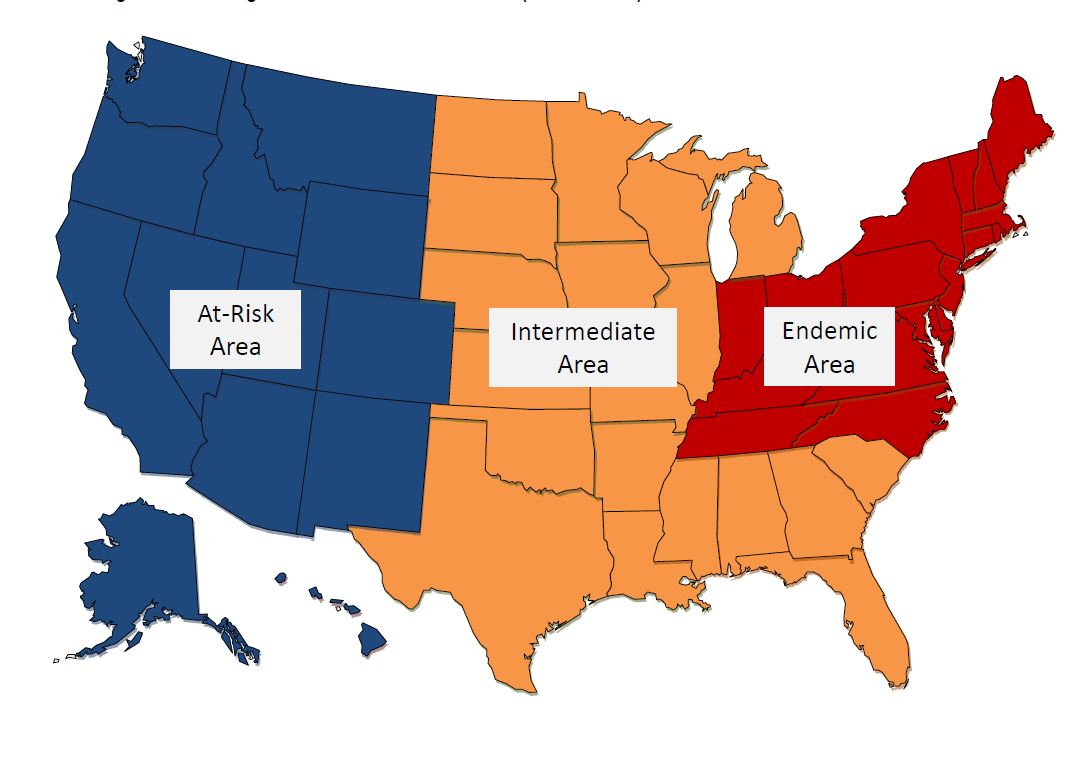 The National Wildlife Health Center (in Madison, Wisc., part of the US Geological Survey) has updated the Bat Submission Guidelines for the 2013/2014 white nose syndrome (WNS) surveillance season.These are the protocols that you, a state wildlife biologist, would use to submit a bat or other sample to the center for WNS diagnosis.
The National Wildlife Health Center (in Madison, Wisc., part of the US Geological Survey) has updated the Bat Submission Guidelines for the 2013/2014 white nose syndrome (WNS) surveillance season.These are the protocols that you, a state wildlife biologist, would use to submit a bat or other sample to the center for WNS diagnosis.
The new protocol breaks the country into three regions (WNS prevalent, some WNS, no WNS yet) and has slightly different procedures for each region. One new aspect is the availability of swab kits, so that whole dead bats don’t always have to be sent to the center.
The notice for the new protocol also include the advice not to survey for WNS before mid-winter. The fungus is typically not recognizable before mid-winter and the extra disturbance harms the bats.
The supporting documents include a lot of PDFs:
The National Wildlife Health Center Bulletin announcing the new protocol. (PDF)The new protocol itself (PDF; 29 pages)
A non-PDF version of the new protocol announcement from whitenosesyndrome.org (which is a US Fish and Wildlife Service site)
And, if you are a state wildlife biologist, and you haven’t signed up for the National Wildlife Health Center’s Wildlife Health Bulletin, you should. It comes out as-needed, and that has never been more than once a month, usually much less. Here’s the link to back issues. Information for subscribing is in tiny print at the end of the bulletin.
Graphic: Map from WNS protocol; USGS
